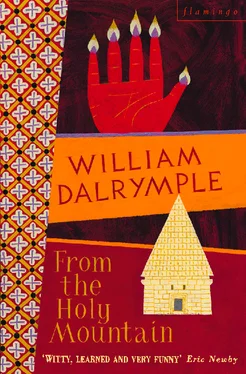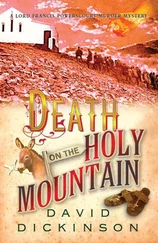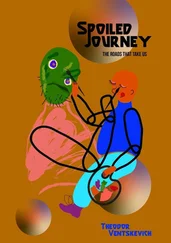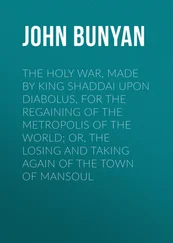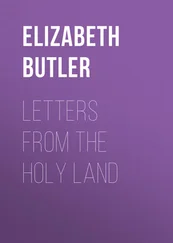Moschos was taking to an extreme the old Orthodox tradition of the wandering monk. In the West, at least since St Benedict introduced the vow of stability in the early sixth century, monks have tended to be static, immured in their cells: as the saying went, ‘A monk out of his cell is like a fish out of water.’ But in the Eastern Churches, as in Hinduism and Buddhism, there has always been a tradition of monks being able to wander from guru to guru, from spiritual father to spiritual father, garnering the wisdom and advice of each, just as the Indian sadhus still do. Even today, modern Greek Orthodox monks take no vow of stability. If after a period of time in a monastery they decide they want to sit at the feet of another teacher in a different monastery, possibly in a completely different part of Greece (or indeed in Sinai or the Holy Land), then they are free to do so.
The Spiritual Meadow was a collection of the most memorable sayings, anecdotes and holy stories that Moschos gathered on his travels, and was written as part of a long tradition of such apophthegmata , or Sayings of the Fathers. However, Moschos’s writings are infinitely more evocative, graphic and humorous than those of any of his rivals or contemporaries, and almost alone of the surviving examples of the genre, they can still be read with genuine pleasure.
For as well as carrying a still potent spiritual message, on another level the book can be enjoyed today simply as a fascinating travel book. Moschos did what the modern travel writer still does: he wandered the world in search of strange stories and remarkable travellers’ tales. Indeed his book can legitimately be read as the great masterpiece of Byzantine travel writing. For not only was Moschos a vivid and amusing writer, he also had an extraordinary tale to tell.
Reading between the lines of John Moschos’s memoirs, it is clear that he and his friend were travelling in dangerous times. Following the collapse of Justinian’s great attempt at reviving the Empire, Byzantium was under assault: from the west by Avars, Slavs, Goths and Lombards; from the east by a crescendo of raids by desert nomads and the legions of Sassanian Persia. The great cities of the East Mediterranean were in fast decay: in Antioch, huts full of refugees were springing up in the middle of the wide Roman avenues which had once buzzed with trade and industry. The great Mediterranean ports – Tyre, Sidon, Beirut, Seleucia – were becoming idle; many were reverting to little more than fishing villages.
As the physical world fell into decay, thousands left their families, intent, like Moschos and Sophronius, on becoming monks and hermits in the desert. Yet even in the great monasteries there was no safety: frequently the two travellers arrived at a destination to find that the abbey where they intended to spend the night had been torched by raiders, and the monks massacred or led off in great stumbling caravans to the slave markets of Arabia. It was not a picture of total holocaust: in those isolated areas of the Empire unaffected by the Persian wars, the monastic scriptoria and workshops were hard at work producing some of the most beautiful Byzantine manuscripts, ivories and icons ever designed. But these oases of monastic calm were exceptions. John Moschos’s writings make clear the horrifying, almost apocalyptic, nature of the destruction he witnessed around him.
In 614 A.D. the travellers’ own home monastery of St Theodosius was burned to the ground by the marauding Persian army, and all their brethren – hundreds of unarmed monks were put to the sword. Shortly afterwards Jerusalem fell and those who survived the massacre – including the city’s Patriarch – were led off as slaves to the Sassanian capital of Ctesiphon. From then on John and Sophronius continued on the road as much refugees as travellers. They took shelter in Alexandria, and when the Persians massed outside the city walls, the pair managed to get onto the last galley out of the beleaguered city.
The following year, the two pilgrims finally reached the shelter of the great walls of Constantinople. There, just before exhaustion brought about his death, Moschos completed his travel memoirs. The Spiritual Meadow received an ecstatic reception across the Empire. Within a generation or two it had been translated into Latin, Georgian, Armenian, Arabic, and a variety of Slavonic languages; to this day many of its anecdotes are common currency among monks and peasants across the Orthodox world.
Most surviving Byzantine texts from the period have a curiously opaque quality: we read either of the flitting shadows of a hundred upstart emperors, rising suddenly through palace coups and disappearing equally rapidly via the assassin’s dagger; or else of saints so saintly as to be virtually beyond comprehension. Nor, for all its often hypnotic beauty, does the surviving corpus of Byzantine art much help in visualising the world that gave it birth. There are the great mosaics at Ravenna with their celebrated portraits of Justinian and Theodora accompanied by their retinues of eunuchs and admirals, generals and bishops, courtiers and sycophants; the same intrigue-ridden court familiar from the written sources. But away from these two isolated Ravenna panels, Byzantine art is strictly non-secular, strictly transcendent. Across the broken apses and shattered naves of a hundred ruined Byzantine churches, the same smooth, cold, neo-classical faces of the saints and apostles stare down like a gallery of deaf mutes; and through this thundering silence the everyday reality of life in the Byzantine provinces remains persistently difficult to visualise. The sacred and aristocratic nature of Byzantine art means that we have very little idea of what the early Byzantine peasant or shopkeeper looked like; we have even less idea of what he thought, what he longed for, what he loved or what he hated.
Yet through the pages of The Spiritual Meadow one can come closer to the ordinary Byzantine than is possible through virtually any other single source. Although it often seems a fairly bizarre book – an unlikely fricassee of anecdote, piety and strange miracles – as a historical text it adds up to the most rich and detailed portrait that survives of the Byzantine Levant immediately before the advent of Islam. Through its pages forgotten monasteries rise suddenly from the sand; even a great metropolis such as Byzantine Alexandria – from which not one building, indeed barely one wall, has survived – is brought back to life, peopled by credible characters, villains and eccentrics.
Most intriguing of all are the tales which tell of the more humble folk, the sort who normally slip through the net cast by the historian. One typical story tells of a muleteer from Rome whose donkeys trample and kill a small child at an inn. He takes ship to the Holy Land and flees to the desert, where he is overcome by remorse and tries to kill himself. Only when a lion refuses to savage him does he reconcile himself to the possibility of divine forgiveness. We meet a repentant Alexandrian grave-robber who claims he was seized by a corpse whose shroud he had tried to steal (he was not released until he promised to take up a more respectable profession); a novice who, overcome with desire, pays a visit to the brothel in Jericho (he is quickly struck down by leprosy); a merchant’s wife from Ascalon who is forced to prostitute herself after her husband’s ship goes down.
Some of the figures are oddly familiar. One story revolves around a Byzantine version of Fr. Christophoros, an animal-loving monk from a suburban monastery outside Alexandria who not only feeds the monastery’s dogs, but also gives flour to the ants and puts damp biscuits on the roof for the birds. Other characters are rather more exotic than anything you are likely to find today, such as the monk Adolas who ‘confined himself inside a hollow plane tree’ in Thessaloniki, cutting ‘a little window in the bark through which he could talk with people who came to see him’.
Читать дальше
